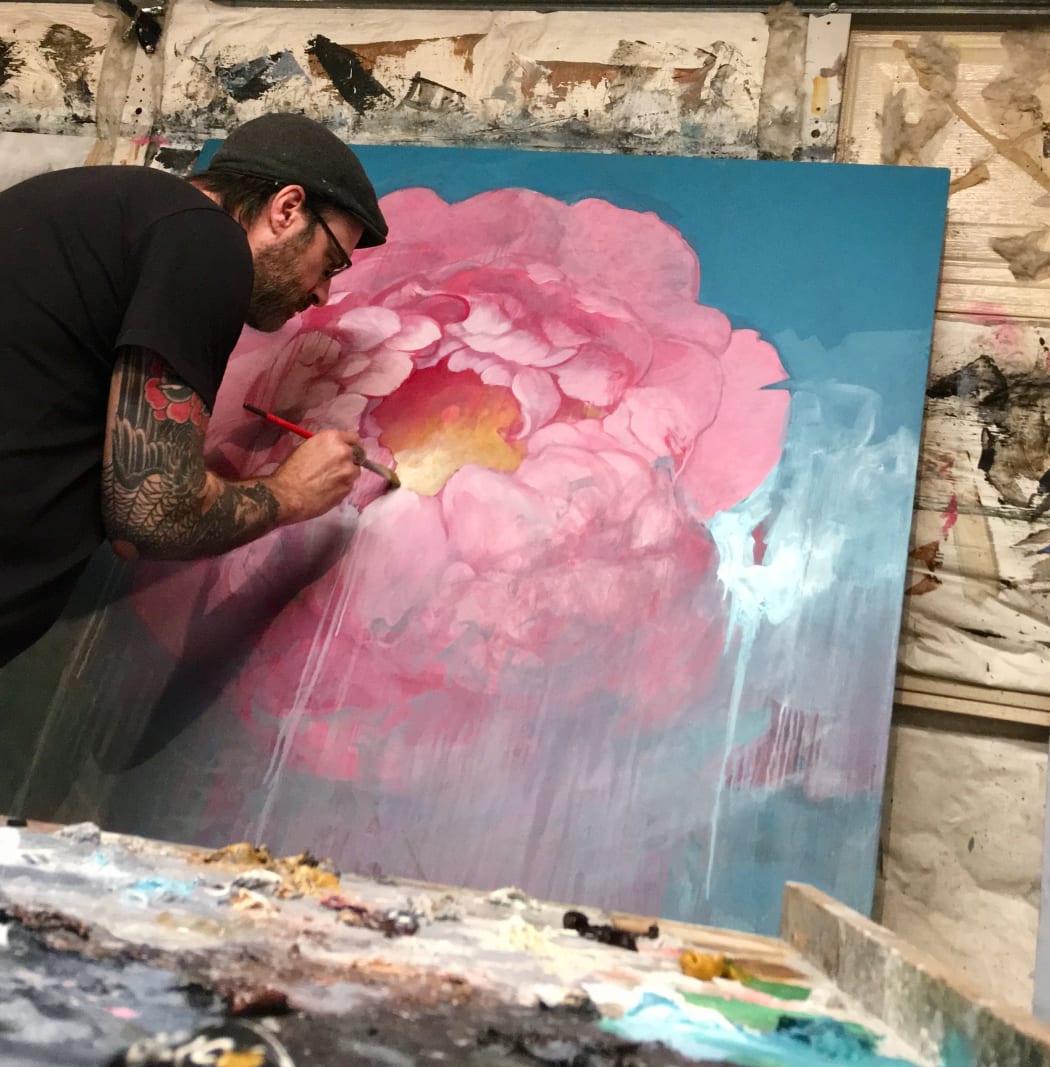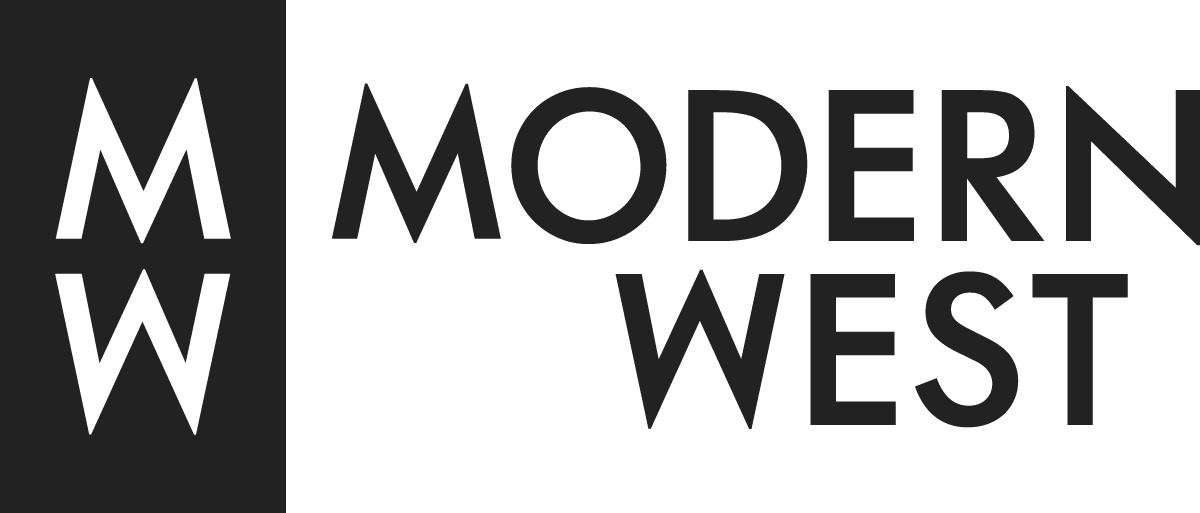
Can you describe the imagery in this particular body of work and what inspired it?
"I was thinking about cosmic archetypes and symbols, I was thinking about the human animal as an ancient biological and spiritual being in a modern world. Bodies emerging from the sea or floating amongst the clouds. I was thinking about the symbols of fierceness and helplessness existing in the same person. The sea can be powerful, you can harness it, but you can also get lost in it. I was thinking about the male and female archetypes existing within each person. I was physically acting out chaos and order. I was contemplating unintended consequences by creating unintended consequences. I was thinking about birth and death being a circle. These were the mythologies for this show."
Could you talk a little about your process of layering and obliterating the painted surface.
"I started each piece very traditionally. I began by rendering figures, flowers, what have you. Then after some dry time, I began to layer up paint at the same time I would remove it, loosely pushing it into shapes and lines over the surface of the figures. Drips become rain, figures emerge from water, and the surface of the sea is rendered. If I saw something in the abstract, I would go back and emphasize it using traditional brushwork and blend it in."
Do you listen to music while you paint, if so what have you been listening to recently?
"Oh boy. Okay, you asked. When I started this project I was listening to 80s new wave music from my childhood, midway through, I went on another nostalgic trip and put 80s British metal on my playlists. By the end, it was all melodic post metal, and experimental electronic music for me. I’m really open with music in general though. I listen to, and work with many genres, from hip hop and jazz to traditional Bulgarian folk music."
I’m interested in the connection between art making and the meditative state described as ‘being in the zone’ or ‘flow state’ how does this relate to your work?
"For me, being “in the zone” is knowing when to “get up and move.” I don’t know what my pieces are going to become in advance, so I don’t plan them without room to breathe. So I spend hours with the work, sometimes months before I touch them again. I think you have to make them sink into your subconscious. Stare at them, think about them aesthetically all day and all night, talk to yourself about them in the shower, do nothing until you get “that feeling” and then burst into action. The most intriguing parts of the work are the parts that were worked the least. Those parts took minutes, not hours. Or in this case, minutes on top of hours. So I guess in the end, my version of being in the zone would be having a constant conversation with yourself and your work, and then acting upon it when you are ready. Then repeat. Over and over again. This brings the work from the unconscious into reality, and back again, when something is finally there, flushed out on the canvas, you can stop. The message came out of you. Now you’ve cleared up a bit of the mystery for yourself, and deepened it for everyone else!"
The tensions that arise between stillness and movement seem to factor in your work, could you speak to that?
"Yes. The movement you are seeing is placed on top of stillness. The movement is acting upon something still and sculptural (Say, a figure rendered with brushes). This is a good thing, because it’s not supposed to be that the two things exist at the same time, in the same space and equally important. Also, tools I use are very sculptural as well, so the marks they make “build up” on the surface. You may notice movement with this technique, but also you may notice built up lines that reinforce the stillness at the same time. These lines add a graphic, illustrative comic book feel here and there. It’s not over-the-top-hit-you-over-the-head, but it’s there."
